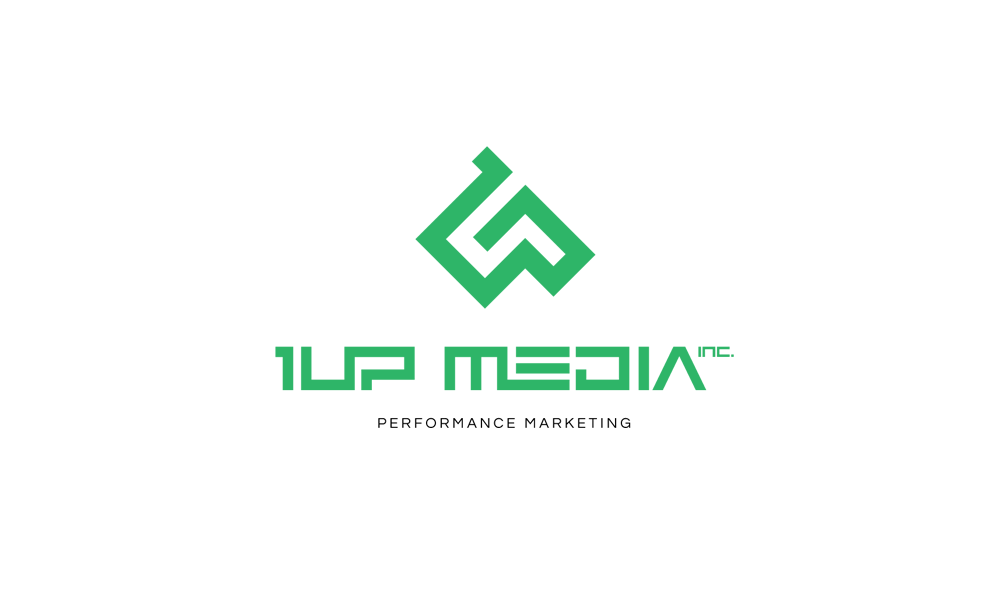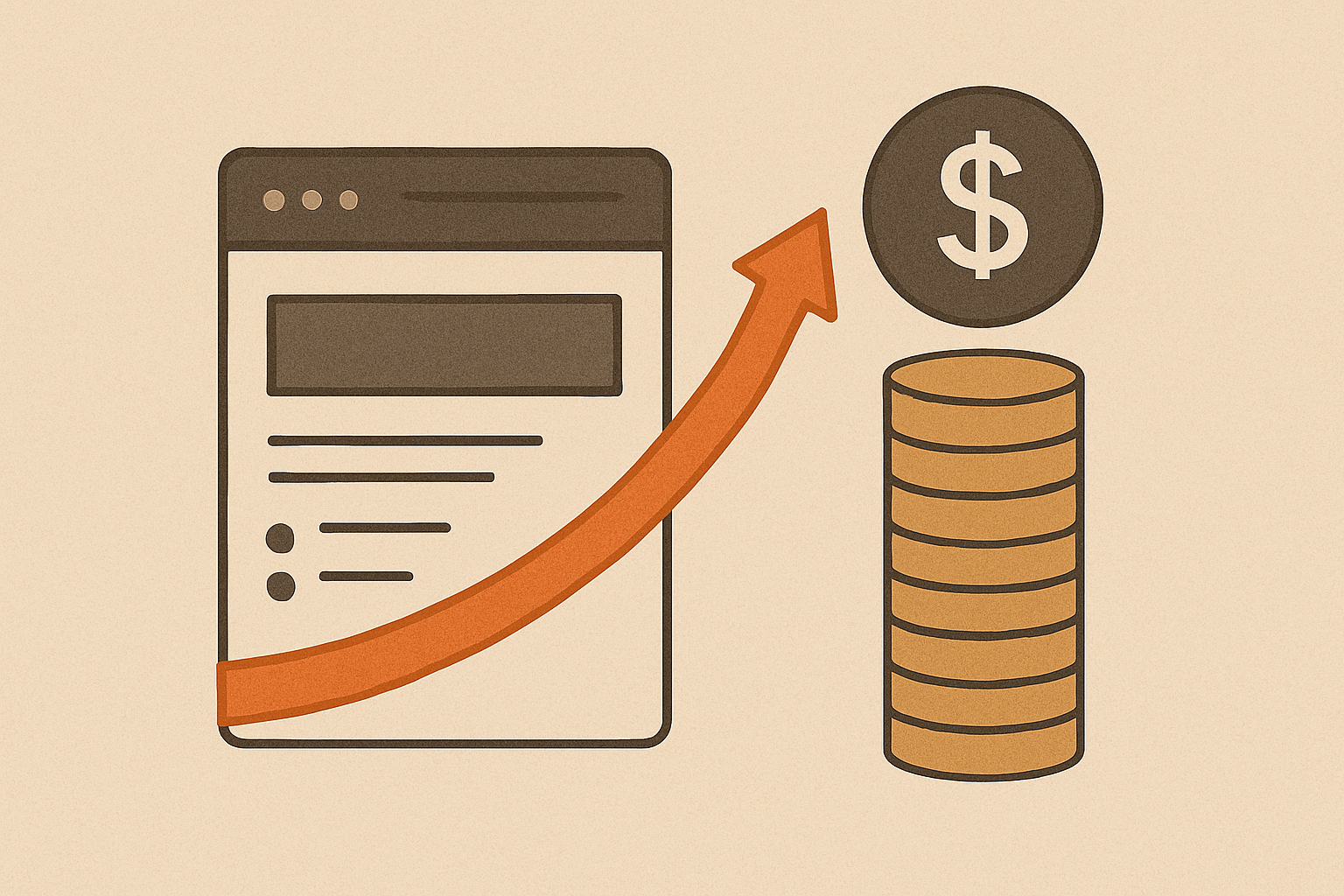Imagine if every piece of content on your site behaved like a high-yield bond instead of an anonymous blog post. What if you could score each URL for risk and reward, forecast its trajectory as precisely as a stock analyst, and reconcile gains and losses on your content balance sheet every month? Welcome to the era of Content Capitalization—where we reclassify your URLs as genuine digital assets rather than vanishing expenses.
Most marketing teams treat blog posts, guides, and landing pages as one-off campaigns. They track sessions, rankings, and impressions, celebrate spikes, then move on—never noticing the slow bleed that happens just below the surface. Forty-five days after launch, most pages have already lost half their yield. By day 90, 60–80 % of that initial value is gone forever. That silent erosion is every bit as real as depreciation on your company’s equipment or amortization of intellectual property. And if you don’t track it, you can’t fix it.
At 1UP Media, we built the URL Ledger™ to detect those hidden losses—cannibalization, dilution, algorithm churn—before they drain your revenue. Here’s a natural, story-driven look at how treating content like capital fundamentally reshapes your strategy, and how you can get started in minutes.
The Invisible Leak in Your Content Portfolio
Close your eyes and picture two scenarios:
Publish & Forget
You ship a new “Ultimate Guide to CRM” on January 1, promote it, then pat yourselves on the back when traffic peaks. Six months later, you barely notice the slow slide in conversions because “sessions look fine.”Audit & Compound
You launch the same guide, but at day 30 you run it through the URL Ledger™. It flags a 20 % traffic drop, surfaces three newer posts competing for the same keywords, and delivers a prioritized playbook to refresh headlines, merge cannibal clusters, and reallocate internal link equity. By month 3, that guide is driving 15 % more revenue than day 1.
Both scenarios begin identically—but one quietly bleeds value like a drip from a leaky faucet, while the other compounds yield like reinvested dividends. That difference is precisely what happens when you treat content as capital instead of a disposable expense.
The traditional lens (“How many pages did we publish this quarter?”) ignores the real question: “Which URLs are eroding our portfolio’s net present value, and which are ripe for reinvestment?” By reframing content through a financial markets perspective, you align marketing, RevOps, and finance on one source of truth—and you stop funding assets that quietly underperform.
Why Content Lives and Dies Like Financial Instruments
In corporate accounting, assets depreciate or appreciate based on usage, condition, and market factors. Content is no different:
Exponential Decay
Organic reach follows a decay curve: audience interest and search visibility drop off exponentially unless you inject fresh updates or promotional fuel. We observe a typical weekly decay constant in the low single digits—meaning your launch ROI halves roughly every 30–45 days without intervention.Compounding Through Reinvestment
Just like dividend reinvestment, timely content updates and link-building injections offset decay and even generate net growth. A quarterly refresh—adding current statistics, new case studies, and schema enhancements—can boost lifetime ROI by 20–30 %.Hidden Liabilities
Cannibalization Debt: When two pages compete for the same intent, they split authority, dragging down both.
Dilution Spread: Poor internal linking scatters equity across dozens of URLs rather than concentrating it in critical flagship assets.
Algorithm Risk Premium: Each core update from Google rewrites the SERP landscape, effectively repricing your content security.
In finance, a CFO provisions for doubtful receivables and keeps reserve accounts to absorb unexpected losses. In the digital world, those provisions are invisible—until you build a URL Ledger™ that tracks fair value, decay rates, and risk scores for every page.
Introducing the URL Ledger™: Your Content Balance Sheet
At its heart, the URL Ledger™ is a living spreadsheet of every indexable URL on your domain. For each one, it records:
| Ledger Field | Meaning |
|---|---|
| Fair Value (FV) | The URL’s estimated revenue capacity: sessions × conversion rate × average order value |
| Decay Rate (λ) | Measured erosion speed—e.g., 5 % of fair value lost per month |
| Credit Grade | Moody’s-style score from AAA (evergreen gold) to CCC (high-risk trend piece) |
| Cluster Authority | Weighted ratio of backlink strength to keyword difficulty |
By integrating with Google Search Console, GA4/Adobe, and your CRM, the Ledger pulls real-time data and translates it into financial-grade insights. You no longer guess if a dip in sessions matters—you see it in dollars lost, provisions booked, and RoI projections updated.
“Within 30 days of activation, our Cluster Ledger™ surface uncovered 18 % latent revenue in a B2B SaaS portfolio—value that was simply decaying unnoticed.”
From Brainstorm to Revenue Recovery: Mapping the Lifecycle
1. Ideation: Guard Against Over-Production Risk
Before a single sentence is written, the Ledger runs an overlap forecast. If your new topic threatens to cannibalize more than 5 % of an existing flagship asset’s authority, you either refine the angle or move to a complementary subject—preserving cluster health.
2. Draft & SEO: Tame Structural Entropy
High “entropy” in headings and metadata signals topic drift, which often leads to rapid long-tail decay. By enforcing consistent tag hierarchies and clear intent signals, you lock in stronger yields.
3. Publication: Capture Baseline and Schedule Audit
On launch day, the Ledger logs initial fair value (V₀) and schedules a 30-day check. Early decay alerts let you pivot headlines, update internal links, or add fresh data before declines snowball.
4. Distribution & Maintenance: Continuous Monitoring
Every week, an Exponentially Weighted Moving Average flags performance deviations beyond 1.5σ. If algorithm churn or cannibal collisions appear, the Ledger auto-creates a ticket in your project management tool, complete with priority, risk score, and ROI forecast.
Cannibalization: The Quiet ROI Killer
You pour resources into a shiny new guide—only to discover it has siphoned traffic from your cornerstone “How to Build a Sales Funnel” piece. Traffic graphs look healthy, but combined conversions drop 20–30 %. Without a Ledger, that collision remains invisible.
The URL Ledger™ detects cannibalization by measuring cosine-similarity between topic embeddings. When two pages score above an 80 % similarity threshold, it flags a “cannibal collision” and shows you:
Which URLs are colliding
Estimated revenue drag
Recommended resolution: merge, 301 redirect, or reframe intent
By resolving collisions quickly—often within a sprint—you recover lost yield and preserve cluster momentum.
Scoring Pages Like Moody’s, Reconciling Like QuickBooks
Two views matter:
Risk Grading
AAA: Evergreen flagships with negligible decay
BBB: Steady performers with minor seasonal dips
CCC: Trend-driven pieces with rapid half-lives
P&L Reconciliation
Maintenance Costs: Editorial hours, link ops, schema enhancements
Decay Write-Downs: Monthly journal entries for value lost
Value Recovery: Credit for revenue uplift when playbooks execute
This dual approach aligns marketing’s ambitions with finance’s rigor—so every content investment shows up as a cash-flow line item, not just a session spike.
Getting Started: Make Content Your Most Reliable Asset
Treating content like capital isn’t a marketing fad; it’s a fundamental shift in how you quantify, forecast, and capture value online. If you continue to run your content as “untracked debt,” you’ll keep watching precious ROI slip through the cracks.
Ready to see your portfolio in a whole new light?
Book a Live Demo
Experience the URL Ledger™ in action. Watch cannibal collisions surface, decay vectors animate, and playbooks generate prioritized tasks—all mapped to projected revenue impact.
Schedule My DemoRun Your Free 60-Second Ledger Scan
No forms, no commitment—just paste your domain and get an instant snapshot of hidden decay, cannibalization hotspots, and credit grade distribution.
Try the URL Ledger Audit
When you treat URLs like yield-bearing assets, you don’t just survive algorithm updates—you thrive through them. Compounding content capital isn’t magic; it’s math. And it’s available to you today.


